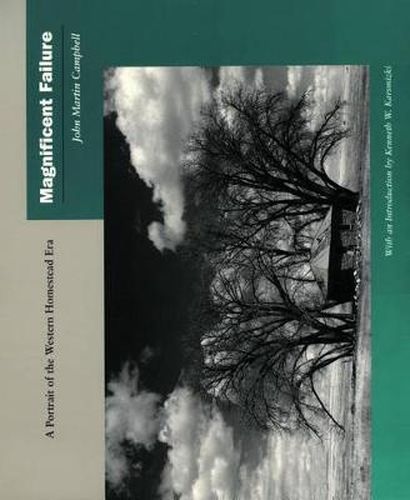Readings Newsletter
Become a Readings Member to make your shopping experience even easier.
Sign in or sign up for free!
You’re not far away from qualifying for FREE standard shipping within Australia
You’ve qualified for FREE standard shipping within Australia
The cart is loading…






In words that are as clean and precise as his haunting, starkly beautiful photographs, the author vividly recreates the life and times of the Western Homestead Era, that period beginning around 1885 when the prairie lands lying westward from the longitude of the western Dakotas became available to pioneering farmers. Some 70 black-and-white duotone photographs, with detailed captions, record the bleak landscapes and the abandoned farms, outbuildings, farm implements, and hand tools that are mute testimonies to the failed hopes of several million families who settled on these arid and semi-arid lands. The author explains how their failure resulted from a deadly combination of natural and economic causes. Neither the federal government nor the homesteaders themselves were aware that some of the western homestead land was so dry that artificial irrigation often was required. But irrigation was unavailable to most of these farms, and many thousands of them failed within a few years. On most of the homestead lands, however, dry farming by which crops are watered by falling rain and snow permitted the newcomers to plant and reap a variety of crops. For several decades, these regions produced flourishing farms, towns, railroad lines, and dirt and gravel roads.
$9.00 standard shipping within Australia
FREE standard shipping within Australia for orders over $100.00
Express & International shipping calculated at checkout
In words that are as clean and precise as his haunting, starkly beautiful photographs, the author vividly recreates the life and times of the Western Homestead Era, that period beginning around 1885 when the prairie lands lying westward from the longitude of the western Dakotas became available to pioneering farmers. Some 70 black-and-white duotone photographs, with detailed captions, record the bleak landscapes and the abandoned farms, outbuildings, farm implements, and hand tools that are mute testimonies to the failed hopes of several million families who settled on these arid and semi-arid lands. The author explains how their failure resulted from a deadly combination of natural and economic causes. Neither the federal government nor the homesteaders themselves were aware that some of the western homestead land was so dry that artificial irrigation often was required. But irrigation was unavailable to most of these farms, and many thousands of them failed within a few years. On most of the homestead lands, however, dry farming by which crops are watered by falling rain and snow permitted the newcomers to plant and reap a variety of crops. For several decades, these regions produced flourishing farms, towns, railroad lines, and dirt and gravel roads.